6 communication skills you must have in your relationships
Plan What You're Going To Say
Communication skills are essential if you want great relationships
Your whole life consists of relationships....
The way to measure how effective your communication skills are is to look at the results you get. Then compare them to the results that you wanted.
Most people don't plan out what they are going to say and then wonder why they get results, they didn't plan on getting. In the diagram below there is a guideline for planning out your communication.
Now, don't go and become a machine that plans out every last syllable. This is for those important conversations where you need precision.
The Acronym is SPECIFY. It stands for
S = sensory specific- what are you going to say and what will be the result of that ? What will you see, hear and feel ?
P = Positively stated - Say what you do want NOT what you don't want.
E = Ecological _ What are all of the potential consequences of what you say ?
C = Choice increasing - Does this communication increase your choices or diminish them ?
I = Initiated by Self - You are the one who is responsible for the outcomes andyou're ready for it.
F = First steps identified- What will be the first thing that you say, and then what and then what next ?
Y = Your resources identified- This means not only your physical resources but also personal internal resources such as courage or strength, determination and patience. All the qualities that you have.
This tool is normally used for goalsetting but it can be applied across lots of different planning exercises. Please feel free to use it for planning vacations wedings or whatever you want.
Goalsetting
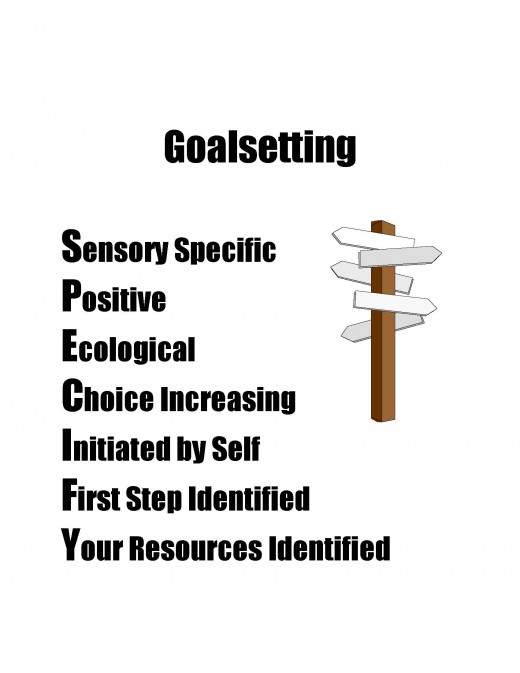
Communication Skills-Rapport
The next skill I'm going to share is Rapport.
This term is often bandied about without really being properly understood. Rapport is that space where your conversations last forever but time flies in an instant. Where you feel totally at one with the other person. It's the way you feel when you are "in" love.
Rapport is the space where magic happens because you both feel understood.
So here's a few tips on rapport. Rapport can be created by mirroring the other person. That is to say when sitting or standing with some one you would behave as if you are their mirror image. They lift their left hand, you lift your right hand. You can also mirror their breathing, body posture, tone of voice, speed of speech, pitch of voice...the list goes on and on. The really cool thing about rapport is that with a bit of practise you can achieve it almost instantly with almost anyone.
** One word of caution here ** Exercise some common sense before you go off getting into rapport with just anyone. It's the space where magic happens.
Follow me on facebook to get even more communication skills for your relationships
- Interpersonal communication skills
Follow me on facebook and or like this page
Rapport Skills
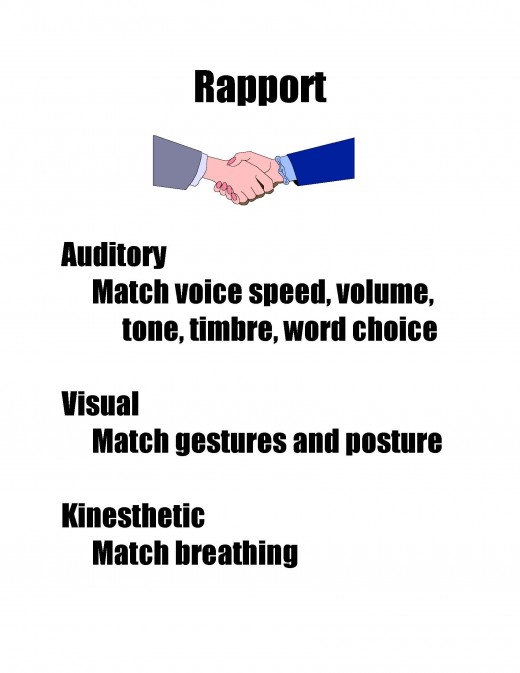
Communication Skills-Reflective Listening
Another really effective way of creating that state of rapport is through the use of reflective listening. Some folks also refer to it as active listening.
Reflective listening is a technique where you repeat back to the other person the basic meaning of what they have just said to you. What this does is it lets them know that you have heard what they have said AND it gives then the chance to clarify what they said to you. It is a really cool way to totally understand what some one is trying to tell you.
Other benefits of reflective listening are that you position yourself as being caring and interested. And if you do this genuinely you will be caring and interested because you now UNDERSTAND their perspective.
Another human being is going to really GET the fact that you GET THEM.
Communication Skills-problem ownership. who is responsible ?
The next thing I'm going to share with you is problem ownership.
Who exactly owns the problem ? Most folks get this one wrong.
An example : You come into your place of work and a young guy is spray painting the walls with graffiti. He's merrily singing away and dancing about happily. He doesn't have a problem. He's happy.
You, on the other hand may be less than ecstatic. You may be really peeved.
Guess what ? You own the problem..! Problem ownership can be defined as "who is not happy, here ?"
Sure, by the time you've finished with the young man he probably won't be happy either but that's not the point.
I guess the point I'm making is that we are all responsible for our own emotions and reactions. And yes it is often difficult not to react when our buttons are pressed.
In future hubs i'm going to give you more tips and strategies to improve not just your communication but also how you think, react and operate as a human being.
Problem Ownership
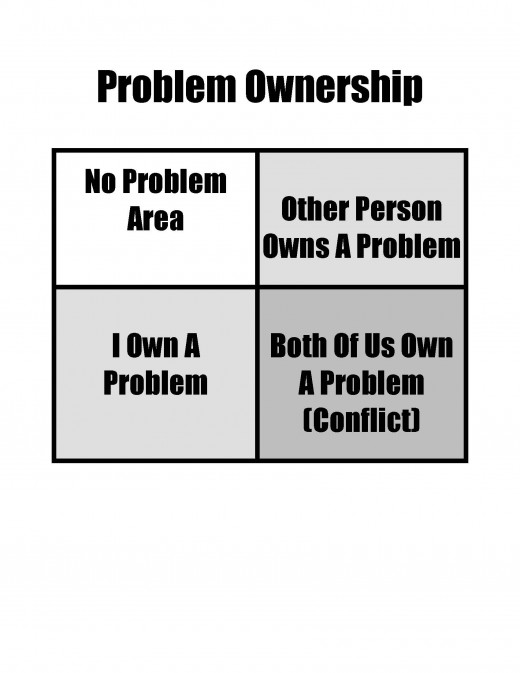
Communication Skills-The Aim Of Transforming Communication
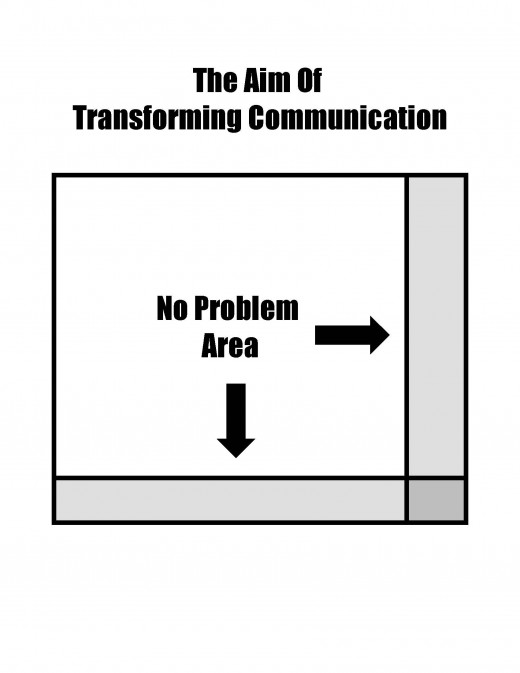
Communication Skills-Anchoring
This is the last tip for today. You may have heard of anchoring before and may even understand it.
Here's what it is and here's a way that you can use it.
Anchoring is using a state that you have previously been in ( eg: really calm and confident ) and being able to use that same state in a different time or place. At will.
Sound useful ?
Now there's lots of different types of anchoring techniques. Today you're going to learn about resource anchors and how to set them. A resource anchor is exactly that. It allows you to reproduce a state in which you were resourceful at sometime in the past.
So, Think of a time when you were confident and relaxed. As you think of that time, remember what your surroundings were. Remember the colour of the walls or of the sky, See the textures and contours of that place where you were confident and relaxed. And when you are fully in that state of relaxation, press your thumb and forefinger together on your left hand. ( If you're left handed you may prefer to use you right hand to set the anchor on ). As you press your thumb and forefinger together say to your self " relaxed and confident "
As you relax more become aware of the sounds that were going on around you as you relaxed. Hear the sounds of the city or of nature, as you remember that time. And when you are ready ....press the same thumb and forefinger together. and repeat to yourself "relaxed and confident"
And now as you relax again, I'd like you to become aware of the sensations that you felt at that time. The seat beneath you and how your body felt so realaxed. And as you remember those physical sensations of being relaxed press your thumb and forefinger together again while saying to yourself, "relaxed and confident "
That's right.
What I'd like you to do now is to stand up and stretch, take a deep breath and look around you. See what is going on in the world around you.
Now sit back down.... and press your that same thumb and forefinger together. Feel the relaxation flooding back over you.
The best thing about this exercise is that the more you do it the easier it gets. I use it when i am going to sleep at night as that is a time when I'm relaxed anyway.
So where would you use your resource anchor ? Well basically anywhere that you need or want to feel relaxed and confident. Eg before that difficult conversation you planned to have.
you can set anchors for any state. For example: happiness, concentration or studying and anything else you can think of.
By the way, when setting anchors there are four things you must remember.
1/ That you feel the state that you want to anchor, strongly. That is to say if you can't feel it clearly, the anchor won't be as strong'
2/ Precisely time when you set the anchor. You can do this by being sure that you really are feeling, whatever it is you want to anchor, at the time you set the anchor.
3/ Use a unique gesture to set your anchor. That is why you set your anchor on the non-dominant hand so there are no contradictory things that you might use the hand for.
4/ Make whatever gesture you use for setting your anchors easy to do again.
One final word. Whenever you want to experience the state that you have anchored, simply press that thumb and forefinger together and you'll go there.
Please practise all of these skills and as you do they'll become easier for you.
What You Need, To Set An Anchor
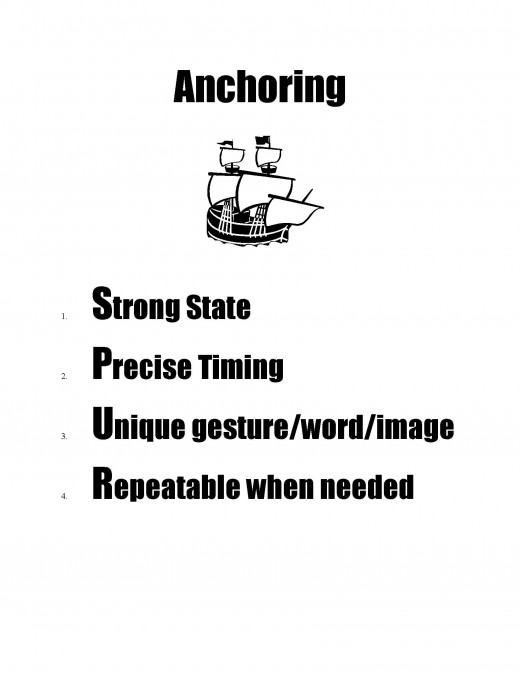
Communication Skills Training
- Top Communication Skills
Top communication skills is all about improving your communication skills so that you get exactly what you want from your life...And so does everyone else around you. Success can be measured by how well you relate to everything around you.. - Communication Skills Training
An interesting though slightly technical overview of some of the aspects of communication skills training.
Transforming Communication
- The Transforming Communication Website
This site is all about some ideas that we have, about how we communicate.
Follow Michael Noone on Facebook
- Interpersonal communication skills
Facebook is a social utility that connects people with friends and others who work, study and live around them. People use Facebook to keep up with friends, upload an unlimited number of photos, post links and videos, and learn more about the people
Michael Noone - the author

Relationship Communication skills
- relationship communication :: Top Communication Skills
All The Communication Skills You'll Ever Need to create warm loving and trusted relationships in your home, with friends colleagues and in your workplace...







